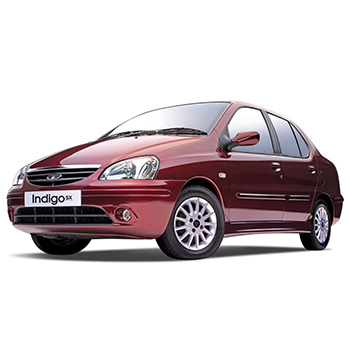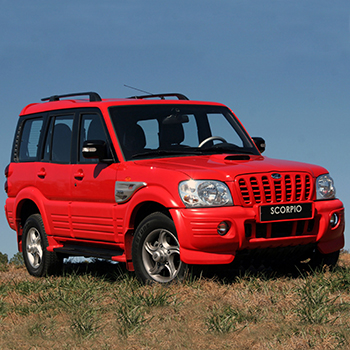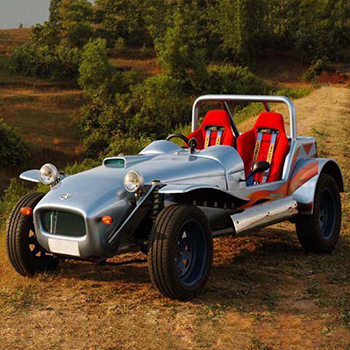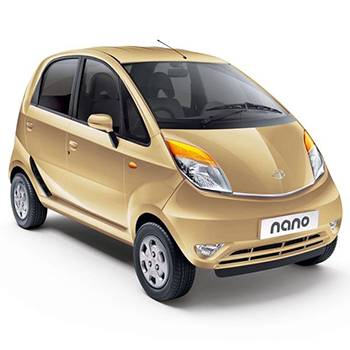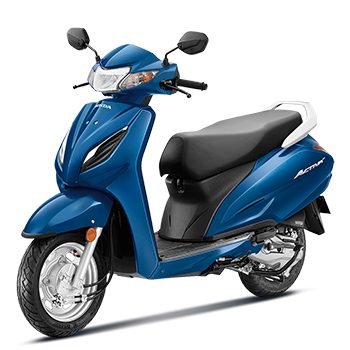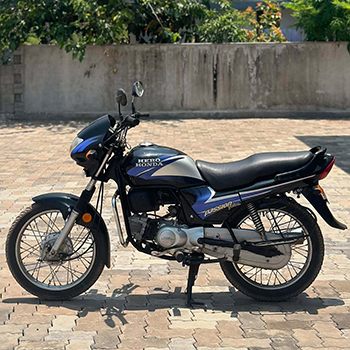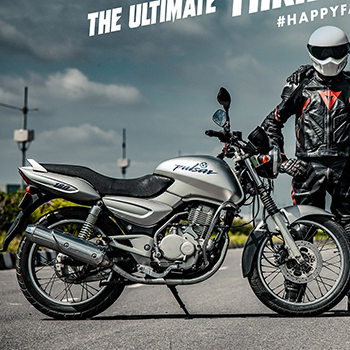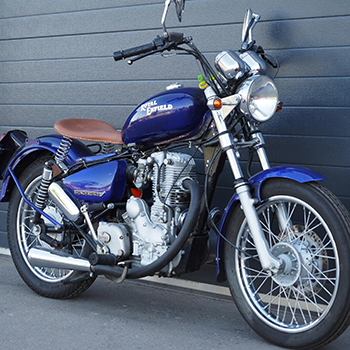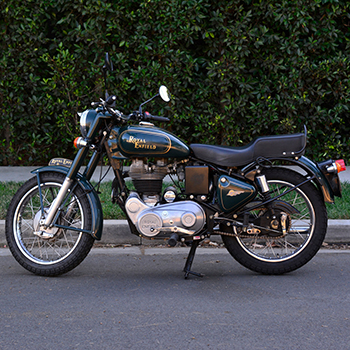Transport Automobiles
2001-2010
(11 items)
Transport Automobiles2001-2010
(11 items)
(11 items)
TATA Indigo 2002
The Tata Indigo, launched in 2002, was Tata Motors’ first compact sedan based on the successful Tata Indica platform. It had a more spacious cargo and kept the front half of the Indica's design, making it an inexpensive family vehicle with a sedan form factor. Targeting urban Indian buyers, the style was understated with a more sophisticated rear portion, a chrome-finished grille, and body-coloured bumpers. It was produced utilising monocoque construction at Tata's facility in Pune. The vehicle's exterior panels were made of pressed steel, while its interior was composed of a combination of metal and plastic parts. High-tensile steel was used in the chassis to provide structural stiffness. In addition to using materials like aluminium for engine components, plastic-moulded dashboards, fabric upholstery and glass-reinforced plastic for some interior components, the Indigo was available with both petrol and diesel engine options. Its value-for-money approach, low cost of ownership, and straightforward yet functional design allowed Tata to establish a presence in the Indian entry-level sedan market.
Details >>Mahindra Scorpio 2002
The Mahindra Scorpio, launched in 2002, marked a significant milestone as Mahindra & Mahindra’s first indigenously designed and developed SUV. Its design was a collaboration between Mahindra’s in-house engineering team and AVL (Austria) for engine development, with styling inputs from the renowned design firm Ken Balough. With its lofty posture, vertical grille, and prominent wheel arches, the Scorpio's appearance was bold and tough, indicating its off-road prowess. It had rear-wheel drive and four-wheel drive options and was constructed on a ladder-frame chassis, which combined strength and durability. A 2.6L turbocharged diesel engine (created in collaboration with AVL) and a 5-speed manual gearbox propelled the car. In order to keep costs down, manufacturing was done at Mahindra's Nashik facility using locally sourced components. The inside included vinyl, fabric upholstery, and injection-moulded plastic accents, while the body panels were mostly composed of stamped steel. With the introduction of the Scorpio, Mahindra's reputation was completely changed, and the business went from making utility vehicles to becoming a major participant in the domestic and foreign SUV industries.
Details >>Chinkara Roadster 2003
The Chinkara Roadster 1.8S, introduced in 2003 by Chinkara Motors in India, was a lightweight, open-top sports car inspired by the classic Lotus Seven. Inspired by the vintage Lotus Seven, Chinkara Motors debuted the lightweight, open-top Chinkara Roadster 1.8S in India in 2003. It had a low-slung body, exposed wheels, and a tubular space frame chassis that prioritised performance and agility in its minimalist, retro-modern design. The design, which offers a purist experience with few electronic aids, was geared towards driving aficionados. A 1.8L MPFI petrol engine from the Maruti Suzuki Esteem, which produced about 88 horsepower, was used to power the vehicle. It was mated to a 5-speed manual gearbox. Many parts were manufactured or modified from pre-existing Indian cars in order to keep costs down throughout the manufacturing process, which was conducted in a small-scale, semi-custom setup close to Mumbai. High-tensile steel tubes were selected for rigidity and crash safety in the chassis, while lightweight fibreglass-reinforced plastic (FRP) was used for the body. With a focus on weight reduction, the interior materials were simple, with metal finishes, leather or vinyl seats, and no instrumentation. With the goal of providing a reasonably priced, track-ready sports car experience, the Chinkara Roadster operated as a niche performance offering in India.
Details >>ICML Motors Extreme 2006
The ICML Extreme, launched in 2006 by International Cars and Motors Ltd. (ICML)—a subsidiary of the Sonalika Group—was designed as a rugged, multi-utility vehicle targeting both rural and semi-urban markets in India. It featured a boxy, SUV-inspired design with a high ground clearance and a no-frills exterior, prioritising utility over aesthetics. The Mahindra Bolero had an influence on the design language, which appealed to consumers looking for a durable and dependable car. It had a 2.0L diesel engine under the hood that was created in partnership with Ricardo PLC (UK) and was renowned for its dependability and fuel efficiency. With a focus on strong localisation of parts, the vehicle was produced at ICML's factory in Amb, Himachal Pradesh. The inside was functional, with simple plastics and easily maintained fabric upholstery, while the body sections were composed of reinforced steel. With possibilities for both 7- and 9-seater configurations, the ICML Extreme was marketed as an affordable solution for both family and business use.
Details >>TATA Nano 2008
The Tata Nano, launched in 2008, was conceived as the world’s cheapest car, envisioned by Ratan Tata to provide an affordable mobility solution for Indian families. The Nano, created by the in-house team of Tata Motors in partnership with IDEM and Trilix, had a small, egg-shaped design and a rear-engine, rear-wheel-drive configuration—a unique decision meant to maximise internal space while minimising the footprint. Its lightweight design was made possible by a 624 cc two-cylinder petrol engine that was situated at the back. Production was previously done in Pantnagar, but the manufacturing was done at Tata's plant in Sanand, Gujarat. In order to cut costs, the Nano made extensive use of lightweight materials, including plastic bumpers, a monocoque body structure made of thin-gauge steel, little sound insulation, and simplified parts like a single windscreen wiper and no power steering. The interior was simple, with cloth seats and harsh plastics, emphasising utility over elegance. The Nano's low-cost innovation and efficient design make it a significant milestone in automotive engineering, even with its modest success.
Details >>Honda Activa
The Honda Activa (2001), a family-friendly, unisex scooter with a sleek, contemporary appearance, was a revolutionary scooter in India. It had a big, comfy seat, integrated headlamps and indicators, smooth body panels, plenty of under-seat storage, and a simple yet sturdy design. It was equipped with a high-rigidity underbone frame for improved stability and a 102 cc 4-stroke air-cooled engine. High-quality ABS plastic and sheet metal were used to create the body panels, which combined lightweight design and durability. To increase structural strength, high-tensile steel was used to make the frame itself. For improved heat dissipation and weight reduction, aluminium alloy was used to make important sections such as the engine casing, crankcase and gearbox. The scooter included polyurethane foam for the seat cushion, aluminium die-cast wheels, and sturdy rubber floor mats and tyres. The Activa's supremacy in the scooter market began when it was manufactured by Honda Motorcycle & Scooter India (HMSI) and was designed for dependability, ease of handling, and little maintenance.
Details >>Hero Honda Passion
The Hero Honda Passion (2001) was a stylish commuter motorcycle designed to offer a balance of reliability, fuel efficiency, and modern aesthetics. It had a stylish yet functional appearance because of its streamlined fuel tank with integrated shrouds, eye-catching body graphics, cosy single-piece seat, and semi-rounded headlight with clear indicators. It was mounted on a tubular double-cradle steel frame for stability and durability, and it was powered by a 97.2 cc 4-stroke, air-cooled engine that was derived from the well-proven CD100 platform. Pressed steel was used for the fuel tank and side panels, while high-impact ABS plastic was used for lightweight strength in body panels such as the side covers and headlamp cowl. For improved heat dissipation, the engine's crankcase and cylinder head were made of aluminium alloy, and the exhaust system was made of mild steel that had been chrome-finished to prevent corrosion. The wheels had rubber tyres on spoked steel rims, while the seat cushions were made of polyurethane foam. Hero Honda Motors Ltd. produced the Passion, one of the most well-liked commuter bikes of its era, by fusing Hero's economical manufacturing with Honda's sophisticated engineering.
Details >>Bajaj Pulsar
The Bajaj Pulsar 2001 was a revolutionary motorcycle that marked Bajaj Auto’s entry into the performance bike segment in India. It had a broad rear stance, an aerodynamic headlight cowl, and a huge fuel tank, giving it a powerful and sporty appearance reminiscent of a streetfighter. The 150cc and 180cc air-cooled, single-cylinder, 4-stroke DTS-i engines, which are renowned for their powerful low-end torque and fuel efficiency, were the two engine options available for the bike. For stability and longevity, the frame was a single downtube, tubular chassis constructed of high-tensile steel. ABS plastic and sheet metal were used to create the fuel tank and side panels, which combined strength and weight reduction. The wheels were alloy rims with spokes or alternative cast wheel versions, and the seat was padded with foam and covered in synthetic leather. Comfort on difficult roads was provided by the suspension components, which comprised dual Nitrox shock absorbers at the back and telescopic forks at the front. With an emphasis on precise machining, die-cast aluminium engine parts, and long-lasting paint finishes to guarantee long-lasting quality, manufacturing was carried out at Bajaj's Chakan plant in Pune using a combination of in-house and vendor-supplied parts.
Details >>Royal Enfield Thunderbird
Launched in 2002, the Royal Enfield Thunderbird 350 represented a major advancement in Enfield's cruiser lineup, catering especially to younger riders looking for a contemporary yet timeless appeal. Wide handlebars, forward-set footpegs, a teardrop-shaped fuel tank, and a low-slung cruiser appearance made for a comfortable riding position that was perfect for long-distance touring. The 350cc air-cooled, 4-stroke, single-cylinder AVL (Anstalt für Verbrennungskraftmaschinen List) lean-burn engine was introduced, improving rider ergonomics with an integrated 5-speed transmission on the left side (a shift from the traditional right-side gearshift). For increased rigidity and riding comfort, a double-cradle frame built of tubular steel was used in the chassis' construction. The fuel tank and the majority of the body panels were composed of steel, which gave it endurance and a vintage appearance. The Thunderbird's unusual "tiger eye" pilot lamp, chrome-plated components, and alloy wheels—a first for Royal Enfield at the time—all contributed to its distinctive character. It was produced in Royal Enfield's Chennai unit and established a new course for the company by striking a balance between vintage style and contemporary dependability and usability.
Details >>TVS Scooty Pep
Targeting female riders and beginners, the TVS Scooty Pep was introduced in 2003 as a small, lightweight scooter. With a sleek, unisex design, smooth contours, vivid colours, and a low seat height (about 740 mm) to ensure ease of use for shorter riders, its design placed a strong emphasis on ergonomics, accessibility, and manoeuvrability. A smooth, gearless ride and good fuel efficiency were provided by the scooter's 87.8 cc, air-cooled, 4-stroke motor with CVT (Continuously Variable Transmission). It was lightweight (kerb weight around 95 kg) and durable thanks to its high-tensile steel monocoque frame. Fibre-reinforced composites and ABS plastic made up the majority of the body panels, which improved corrosion resistance and reduced weight. The Scooty Pep, which was produced at the TVS Motor Company's plant in Hosur, Tamil Nadu, gained enormous popularity because of its low cost, simple maintenance, and user-friendly design. It also helped TVS solidify its dominance in the gearless scooter market.
Details >>Royal Enfield Classic 500
The Royal Enfield Classic 500, launched in 2009, marked a significant evolution in the brand's lineup by blending retro styling with modern engineering. Its classic design, which was influenced by post-World War II motorcycles, captured the essence of British motorcycles of the 1950s with its teardrop fuel tank, vintage-style insignia, sprung single saddle, and peashooter exhaust. The Unit Construction Engine (UCE), a 499 cc, single-cylinder, fuel-injected, air-cooled engine that produced smoother performance and complied with contemporary pollution standards, was used for the first time by a Royal Enfield. The Classic 500 was manufactured at Royal Enfield’s facility in Chennai, India, using a combination of a mild steel chassis, aluminium alloy engine components, and sheet metal body panels. Its classic look was enhanced by chrome-plated components, spoke wheels, and conventional finishes; the rider was kept comfortable by leatherette seat coverings and rubber (for footrests and grips). The model, which provided a vintage ride supported by contemporary dependability, was essential to Royal Enfield's worldwide comeback.
Details >>